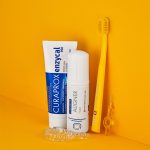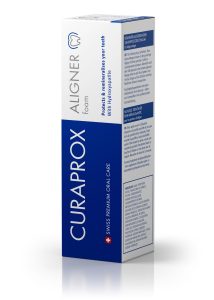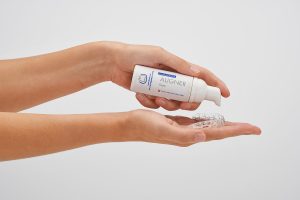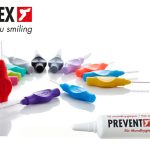How composite bonding can help deliver the smiles patients seek
For Georgia May Jagger, fashion model and designer, the noticeable gap between her two front teeth has become part of her iconic look. For the daughter of Rolling Stones rocker Mick Jagger and supermodel Jerry Hall, it’s not a problem. As she once proclaimed to the Daily Mail, “I like the fact that I have good old-fashioned British teeth with a big gap.”[i]
She’s not alone in liking the look. In the Caribbean, gapped teeth are associated with sexual allure and in West Africa, they signify wealth.[ii]
Diastema – to give the condition its proper name – is not harmful. It is defined as spaces of more than 0.5mm between the proximal surfaces of adjacent teeth.[iii] Although a diastema can be transient in the developing dentition[iv] – in children, as you know, any gaps typically close when their permanent teeth come through – diastema in adulthood, particularly in the anterior region, can present an aesthetic problem for many. And in this image obsessed world, patients are, more than ever before, seeking professional treatments to create their perfect smiles. Indeed, a survey by the cosmetic treatment website RealSelf found that 43% of UK adults stated that they were considering aesthetic dental treatments.[v]
Diastema decisions
Diastemas can be closed orthodontically – braces are common[vi] – or restoratively. Restorative options include porcelain laminate veneers, composites, metal-free ceramic crowns and metal ceramic crowns. While porcelain is stronger and stains less than composite, it does cost more and takes multiple appointments. Composite bonding, on the other hand, is completed in one appointment and delivers instant results.iiiComposite can be added or reduced to fit a patient’s desired smile.
Compared to more extensive procedures like dental veneers or crowns, composite bonding is less invasive.[vii]It usually requires minimal to no removal of tooth enamel and typically doesn’t need anaesthesia. This means less discomfort and a quicker treatment time. So, the treatment benefits both patients and the dental professional’s workflow.
Recent aesthetic composite resin materials have similar physical and mechanical properties to that of the natural tooth and possess an appearance like natural dentine and enamel. They offer a diverse range of shades and varying opacities designed specifically for layering.[viii]
Back to black
Other gaps such as gingival embrasures, or black triangles, and the loss of interdental papillae, can also be treated by dental bonding, depending on the cause. The most common reason in the adult population is loss of periodontal support because of plaque-associated lesions.[ix]
 These perceived unsightly black triangles can be a tricky restorative procedure but it can be made easier by using the cutting edge procedural advances of the Bioclear Method powered by 3M Oral Care. This consists of a standardised, five-step process, utilising clear anatomic matrices and trusted materials like Filtek dental restoratives from 3M to deliver consistently high quality results. Warmed flowable and paste composite is injectd into preformed anatomic mylar matrices, resulting in smooth contours in hard-to-access subgingival and interproximal areas – thereby closing black triangles. The process can also be used for diastemas, undersized laterals and other challenging cases.
These perceived unsightly black triangles can be a tricky restorative procedure but it can be made easier by using the cutting edge procedural advances of the Bioclear Method powered by 3M Oral Care. This consists of a standardised, five-step process, utilising clear anatomic matrices and trusted materials like Filtek dental restoratives from 3M to deliver consistently high quality results. Warmed flowable and paste composite is injectd into preformed anatomic mylar matrices, resulting in smooth contours in hard-to-access subgingival and interproximal areas – thereby closing black triangles. The process can also be used for diastemas, undersized laterals and other challenging cases.
Black triangles can be prevented, of course. Dental professionals should encourage patients at risk of developing them to take a pro-active approach and make adjustments to their dental routine. Flossing gently, using a soft-bristle toothbrush and avoiding risk factors for gum disease such as smoking can all help reduce their occurrence.
While noticeable tooth gaps may have worked for the likes of Brigitte Bardot and Vanessa Paradis, diastema and black triangles are often viewed as flaws that patients want corrected. Fortunately, these days dental professionals have the ability, the tools and the materials available to them to ensure their patients get exactly the smiles they want.
For more information, call 08705 360 036 or visit www.go.3M.com/ocsdpr
Please scan for the:

Latest news on education, webinars and events
FREE clinical samples – try before you buy
Save with current sales promotions

3M, Bioclear and Filtek are trademarks of the 3M Company.
About 3M
At 3M, we apply science in collaborative ways to improve lives daily. With $34.2 billion in sales, our 92,000 employees connect with customers all around the world.
The UK is home to one of the largest 3M subsidiaries outside the USA, employing around 1,900 people across 12 locations, including four manufacturing sites.
Products manufactured in the UK include coated abrasives, personal safety equipment and adhesive tapes.
As a strategic partner of the British Science Association and a sponsor of WeAreTheCity Rising Star Awards in Science and Engineering, 3M is a passionate advocate for diversity, equity and inclusion in STEM (Science, Technology, Engineering and Maths).
Learn more about 3M’s creative solutions to the world’s problems at 3M.co.uk or follow @3MUK on Twitter or 3m.uk on Instagram.
[i] Daily Mail https://www.dailymail.co.uk/tvshowbiz/article-1082925/Taking-Mick-Georgia-Jagger-shows-inheritance–Her-fathers-famous-lips.html [Accessed September 2023]
[ii] Joseph Mwangi Macharia, Kenyan author and poet, https://www.annamastenterprises.com/my-lovely-diastema/ [Accessed September 2023]
[iii] Prabhu R, Bhaskaran S, Geetha Prabhu KR, Eswaran MA, Phanikrishna G, Deepthi B. Clinical evaluation of direct composite restoration done for midline diastema closure – long-term study. J Pharm Bioallied Sci. 2015 Aug;7(Suppl 2):S559-62. doi: 10.4103/0975-7406.163539. PMID: 26538917; PMCID: PMC4606659. [Accessed September 2023]
[iv] Vijaya S, Vijaya S, J Shetty M. Management of Midline Diastema in a Young Adult With Minimal-Thickness Porcelain Laminate Veneers. Cureus. 2023 Jul 14;15(7):e41904. doi: 10.7759/cureus.41904. PMID: 37588337; PMCID: PMC10425606. [Accessed September 2023]
[v] RealSelf UK Aesthetics Interest Survey 2018 https://drive.google.com/file/d/1xh0x0ar-PW_fSGcJDr3vUBBi58FGnVSm/view [Accessed September 2023]
[vi] Tanaka OM, Morino AY, Machuca OF, Schneider NÁ. When the Midline Diastema Is Not Characteristic of the “Ugly Duckling” Stage. Case Rep Dent. 2015;2015:924743. doi: 10.1155/2015/924743. Epub 2015 Aug 5. PMID: 26345220; PMCID: PMC4540983. [Accessed September 2023]
[vii] Pini NP, Aguiar FH, Lima DA, Lovadino JR, Terada RS, Pascotto RC. Advances in dental veneers: materials, applications, and techniques. Clin Cosmet Investig Dent. 2012 Feb 10;4:9-16. doi: 10.2147/CCIDEN.S7837. PMID: 23674920; PMCID: PMC3652364. [Accessed September 2023]
[viii] Goyal A, Nikhil V, Singh R. Diastema Closure in Anterior Teeth Using a Posterior Matrix. Case Rep Dent. 2016;2016:2538526. doi: 10.1155/2016/2538526. Epub 2016 Oct 13. PMID: 27818804; PMCID: PMC5081967. [Accessed September 2023]
[ix] Montevecchi M, Checchi V, Piana L, Checchi L. Variables Affecting the Gingival Embrasure Space in Aesthetically Important Regions: Differences between Central and Lateral Papillae. Open Dent J. 2011;5:126-35. doi: 10.2174/1874210601105010126. Epub 2011 Jul 29. PMID: 21892365; PMCID: PMC3162192. [Accessed September 2023]
















